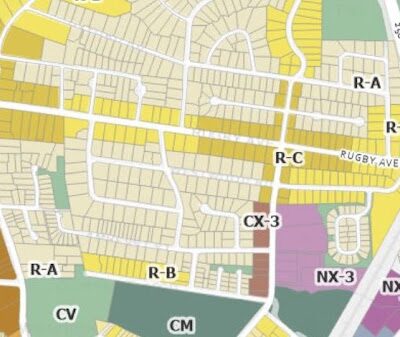When Habitat for Humanity broke ground on Sunrise Park in March, the city took a big step towards addressing nearly a decade of affordable housing anxieties. However, the Sunrise model—affordable units tucked into a mixed-income, mixed-use site—hasn’t fared as well for other local developers.
|
Roughly half the units in Sunrise Park, located near the Carlton neighborhood, will be market-rate homes for potential buyers. |
Habitat bought the Sunrise Trailer Court in 2004, as the poverty rate for the surrounding counties climbed and the city began to confront the severity of its affordable housing problem. By the next year, the shortage was evident: The Thomas Jefferson Planning District estimated that it needed more than 4,000 units to adequately serve those residents in the five-county area who made 50 percent of the area median income (AMI). When the city named affordable housing a top priority in its 2007 comprehensive plan, annual salaries for the top five occupations in Charlottesville fell below $25,000.
The comprehensive plan urged developers to proffer affordable units, namely through encouraging mixed-use, mixed-income projects. The redeveloped trailer court, renamed Sunrise Park, emerged as a poster child for the city’s affordable housing goals. Habitat for Humanity promised a total of 60 units—bumped to 66 last week by the Planning Commission—and capped affordable rentals at a sliver of the AMI, which is currently $34,000 for one person. Habitat also promised to develop without relocating current Sunrise residents.
“We think it’s the right way to redevelop,” says Habitat Executive Director Dan Rosensweig. “Not only does it create affordable housing possibilities so all who work in Charlottesville have the opportunity to live in Charlottesville, it also breaks up pockets of poverty.”
Rosensweig, who is also on the City Planning Commission and the Housing Advisory Committee (HAC), adds that a mixed-income model “presents a more sustainable financial model.” Sunrise will include 16 duplexes and six condo units for Habitat partner families, nine affordable rental units for current residents, and an on-site manager’s apartment. The balance—34 units—will be market-rate lots for sale.
Meanwhile, plenty more locals await the dawn of more affordable options. The public housing waiting list numbers in the hundreds while redevelopment plans are still in the works, and the waiting list for Section 8 housing vouchers remains closed. And, as Charlie Armstrong knows, the line between affordable and mixed-unit can be a complicated one to walk.
Armstrong, Southern Development’s vice president for land development, requested a rezoning for William Taylor Plaza, a 50-unit development planned for former city property at the corner of Ridge Street and Cherry Avenue. In exchange for another 30 units overall, Southern Development agreed to proffer 42 affordable units.
However, the project divided the commission: Rosenswieg called William Taylor Plaza one of the best projects he’d seen, while Commissioner John Santoski expressed concerns that the project amounted to “economic segregation.” The rezoning was denied in a 4-2 vote.
As Armstrong puts it, there are two groups that can subsidize affordable housing —the government, or private developers that proffer units in mixed-income sites. “The idea,” says Armstrong, “is that market rate sale and rental units serve as a way for private industry to subsidize affordable units.”
Will it work that way going forward? Rosensweig says mixed-income models should be a priority for achieving affordable housing in the next comprehensive plan, due in 2012. And while Sunrise and William Taylor Plaza have their differences—location, neighborhood legacy and scale—Rosensweig says the latter is “an excellent project consistent with the comprehensive plan in almost every way imaginable.”
Councilor Satyendra Huja, who told the Planning Commission that Charlottesville needed more projects like Sunrise, also says mixed-income should be a strategy moving forward. “I think there’s a lot of affordable housing to be staggered throughout the city, not just one plan,” he tells C-VILLE. “Sunrise is a good example.”
The Fifeville neighborhood, home to the William Taylor Plaza site, “had quite a bit of affordable housing already,” says Huja, who adds that the recession lowered many home prices for potential homebuyers. “We don’t want to build affordable housing only,” he says. “We want to build middle-income housing also.”
In the meantime, Southern Development looks for an anchor tenant for William Taylor Plaza, Fifeville retains its scale and character, and Sunrise residents eagerly await their new homes.
“It’s going to be a fabulous community,” Sunrise resident Louisa Candelario told the Planning Commission last week. “[One] of mixed-income, mixed-race, and mixed-cultures.”
/SunriseDev-1.jpg)





